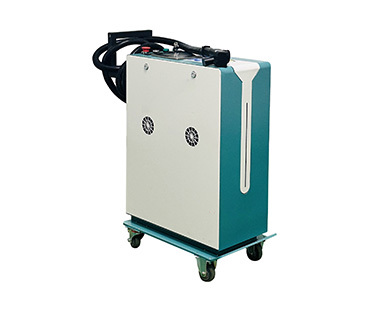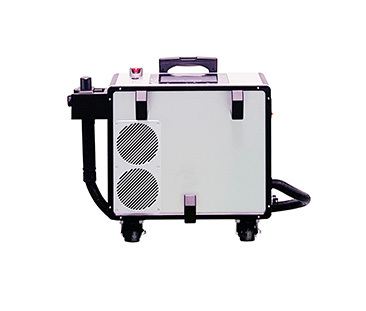Laser Welding: The Ultimate Solution for Mold Repair Challenges
Release time:
2025-04-18
Laser Welding: The Ultimate Solution for Mold Repair Challenges Table of Contents 1. Introduction to Laser Welding in Mold Repair 2. What is Laser Welding? 3. Benefits of Laser Welding for Mold Repair 3.1 Precision and Accuracy 3.2 Speed of Execution 3.3 Cost-Effectiveness 4. Applications of Laser Welding in Mold Repair
Laser Welding: The Ultimate Solution for Mold Repair Challenges
Table of Contents
- 1. Introduction to Laser Welding in Mold Repair
- 2. What is Laser Welding?
- 3. Benefits of Laser Welding for Mold Repair
- 4. Applications of Laser Welding in Mold Repair
- 5. Understanding Laser Welding Technology
- 6. Challenges in Mold Repair and How Laser Welding Addresses Them
- 7. The Future of Laser Welding in Manufacturing
- 8. Frequently Asked Questions
- 9. Conclusion
1. Introduction to Laser Welding in Mold Repair
Laser welding has emerged as a transformative technology in the realm of industrial equipment and components, particularly in mold repair. Traditional methods of mold repair often involve time-consuming processes and can compromise the integrity of the mold. In contrast, laser welding offers a **precise, efficient**, and **cost-effective** alternative that addresses these issues head-on.
In this article, we will delve into the intricacies of laser welding, its benefits, and how it serves as the ultimate solution for mold repair challenges. Whether you are a manufacturer, engineer, or technician, understanding this technology will enhance your operational capabilities and improve your mold repair processes.
2. What is Laser Welding?
Laser welding is a fusion welding process that utilizes a concentrated beam of light—produced by a laser—to melt materials, thereby creating a strong and durable bond. **The technology operates on the principle of focused energy**, which allows for minimal thermal distortion in the workpiece and is particularly beneficial for intricate mold repairs.
This technique can be applied to various materials, including metals and certain plastics, making it versatile and adaptable to different industrial applications. The precision of laser welding enables the repair of minute defects without affecting the surrounding areas, a critical factor in mold repair environments.
3. Benefits of Laser Welding for Mold Repair
The adoption of laser welding in mold repair brings forth several notable advantages that set it apart from traditional welding methods.
3.1 Precision and Accuracy
One of the most significant benefits of laser welding is its **exceptional precision**. The laser beam can be finely focused, allowing for accurate targeting of specific areas. This capability is essential in mold repair, where even minor imperfections can lead to severe operational inefficiencies.
3.2 Speed of Execution
Laser welding offers a **rapid turnaround time** compared to traditional methods. The high-energy laser beam can quickly melt and fuse materials, significantly reducing the time required for repairs. This efficiency contributes to shorter downtimes, enabling manufacturers to resume production promptly.
3.3 Cost-Effectiveness
While the initial investment in laser welding technology may be substantial, the long-term savings are significant. The reduced need for extensive post-repair machining, coupled with the durability of laser-welded joints, enhances overall cost-effectiveness in mold repair processes.
4. Applications of Laser Welding in Mold Repair
Laser welding has found applications across various industries, particularly in sectors where mold repair is critical.
4.1 Mold Repair Techniques
In mold repair, laser welding is employed to restore the surface of molds that have suffered wear and tear. This process can involve adding material to build up worn areas or repairing cracks and defects without compromising the mold's geometry.
4.2 Automotive Industry
The automotive industry extensively utilizes mold repair for components such as injection molds, which are integral to producing vehicle parts. Laser welding allows for precise repairs, ensuring that molds can continue producing high-quality parts without interruption.
4.3 Aerospace Industry
In the aerospace sector, where safety and reliability are paramount, laser welding technology is employed to repair molds used in the manufacturing of aircraft components. The precision and strength of laser welds ensure that repaired molds meet stringent regulatory and safety standards.
5. Understanding Laser Welding Technology
To appreciate the benefits of laser welding in mold repair, we must understand the technology behind it.
5.1 Types of Lasers Used
Various types of lasers are used in welding applications, including:
- **Fiber Lasers**: Known for their high efficiency and versatility.
- **CO2 Lasers**: Commonly used for thicker materials due to their high power output.
- **Solid-State Lasers**: Known for precision and stability.
Each type has its pros and cons depending on the specific application and materials being welded.
5.2 Essential Equipment for Laser Welding
The essential equipment for laser welding includes:
- **Laser Source**: Generates the laser beam.
- **Optical System**: Focuses the laser beam on the workpiece.
- **Control System**: Regulates the movement and parameters of the welding process.
- **Safety Equipment**: Protects operators from laser exposure and fumes.
Understanding this equipment's functionality is crucial for successful laser welding operations in mold repair.
6. Challenges in Mold Repair and How Laser Welding Addresses Them
Mold repair presents numerous challenges, including material compatibility, precision requirements, and the need to maintain mold integrity. Laser welding effectively addresses these challenges by providing a solution that minimizes thermal distortion and allows for targeted repairs.
The focused energy of lasers reduces the risk of overheating surrounding areas, ensuring that the mold’s geometry remains intact. Additionally, laser welding can often be performed without extensive pre- or post-weld preparation, streamlining the repair process.
7. The Future of Laser Welding in Manufacturing
As manufacturing technologies evolve, the future of laser welding looks promising. Innovations in laser technology—such as advancements in power output, automation, and precision—are enhancing its application in mold repair and beyond. The integration of artificial intelligence and machine learning is expected to further optimize welding processes, making them more efficient and reliable.
Furthermore, as industries increasingly focus on sustainability, laser welding presents an environmentally friendly option due to its energy efficiency and minimal waste generation.
8. Frequently Asked Questions
What is the primary advantage of laser welding for mold repair?
The primary advantage is the **precision** it offers, allowing for targeted repairs that minimize distortion and maintain the mold's integrity.
How does laser welding compare to traditional welding methods?
Laser welding is faster and often more cost-effective, with less thermal distortion and a cleaner finish than traditional welding methods.
What materials can be repaired using laser welding?
Laser welding can be applied to various materials, including metals and some plastics, making it versatile for multiple industries.
What industries benefit most from laser welding?
Industries such as automotive, aerospace, and manufacturing greatly benefit from laser welding due to the precision and efficiency it offers for mold repair.
Is laser welding environmentally friendly?
Yes, laser welding is considered environmentally friendly due to its energy efficiency and reduced waste generation compared to other welding methods.
9. Conclusion
Laser welding stands out as a powerful solution for mold repair challenges across various industries. Its **precision**, **speed**, and **cost-effectiveness** make it an invaluable asset for manufacturers seeking to maintain high-quality production standards. As technology continues to advance, the role of laser welding in mold repair will undoubtedly expand, offering even more innovative solutions to meet the evolving needs of the industry. Embracing this cutting-edge technology will ensure that manufacturers not only resolve current mold repair issues but also position themselves for future success in a competitive landscape.
Key words:
- All
- Product Management
- News
- Introduction
- Enterprise outlets
- FAQ
- Enterprise Video
- Enterprise Atlas
Recommend News





Contact Us
Phone: +86 (China) 152-5267-7152
WhatsApp: +86 (China) 152-5267-7152
E-mail:info@udibomfg.com
Address: Building 1002 Redstar International Technology Park, Mudu Town, Wuzhong District, Suzhou City, Jiangsu Province, China





